#siddham script
Explore tagged Tumblr posts
Text
Heart Sutra, Sanskrit in Siddham script, vertical right to left
(download printable version)

prajñāpāramitā hṛdaya sūtra
āryāvalokiteśvaro bodhisatvo gambhīrāṃ prajñāpāramitācaryāṃ caramāṇo vyavalokayati sma pañcaskandhāṃs tāṃś ca svabhāvaśūnyān paśyati sma.
iha śāriputra rūpam eva śūnyatā śūnyataiva rūpaṃ rūpān na pṛthak śūnyatā śūnyatāyā na pṛthag rūpam, evam eva vedanāsaṃjñāsaṃskāravijñānam.
iha śāriputra sarvadharmāḥ śūnyatālakṣaṇā anutpannā aniruddhā amalā avimalā anūnā aparipūrṇāḥ.
tasmāc chāriputra śūnyatāyāṃ na rūpaṃ na vedanā na saṃjñā na saṃskārāḥ na vijñāna. na caksuḥśrotraghrāṇajihvākāyamanāṃsi na rūpaśabdagandharasaspraṣṭavyadharmā na cakṣurdhātur yāvan na manovijñānadhātur nāvidyā nāvidyākṣayo yāvan na jarāmaraṇaṃ na jarāmaraṇakṣayo na duḥkhasamudayanirodhamārgā na jñānam na prāptiḥ.
tasmāc chāriputra aprāptitvād bodhisatvaḥ prajñāpāramitām āśritya viharaty acittāvaraṇaś cittāvaraṇanāstitvād atrasto viparyāsātikrānto niṣṭhanirvāṇaḥ. tryadhvavyavasthitāḥ sarvabuddhāḥ prajñāpāramitām āśritya anuttarāṃ samyaksambodhim abhisambuddhāḥ.
tasmāj jñātavyaḥ prajñāpāramitā mahāmantro mahāvidyāmantro ’nuttaramantro ’samasamamantraḥ sarvaduḥkhapraśamanaḥ satyam amithyātvāt.
prajñāpāramitāyām ukto mantraḥ tadyathā
gate gate pāragate pārasaṃgate bodhi svāhā.
iti prajñāpāramitāhṛdayaṃ samāptam
0 notes
Text
The Siddham script, also known as Siddhamātṛkā, is a historical writing system that originated in ancient India. Its name is derived from the Sanskrit word "Siddha," meaning "accomplished" or "perfected," reflecting its association with esoteric knowledge and spiritual practices.
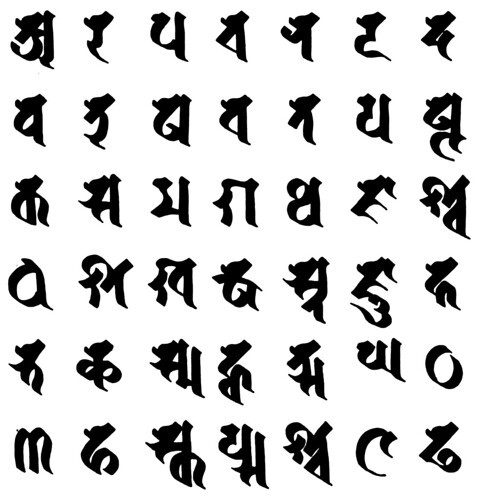
0 notes
Text
Praise be to Yevon
The Yevon script seen in FFX (top image) was inspired by a form of Sanskrit called Siddhaṃ script (bottom image), which is used in one of the oldest and biggest Japanese schools of Buddhism - the Shingon Buddhism.
The letter A of the Yevon script alphabet represents Yevon (you can see this symbol repeatedly throughout the game), while the letter Z represents Sin.
An important practice for Shingon Buddhists is “meditating on the letter A”.
Therefore, this letter has a profound meaning in both scripts.
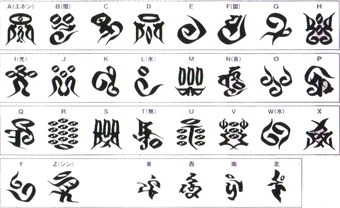

Info and image source: https://finalfantasy.fandom.com/wiki/Yevon
https://id.m.wikipedia.org/wiki/Aksara_Siddha%E1%B9%83
(phew…I really did miss making these posts for you guys)
#final fantasy x#final fantasy 10#ffx#ff10#square enix#squaresoft#video game#video game trivia#buddhism#yevon#shingon buddhism#sanskrit#siddham script#writing systems#japan#meditation
89 notes
·
View notes
Text
Hey, guys! Want to vote on the best 6th-10th Century script (writing system) that I, Gecko, personally like?
Of course you do! Writing systems are SO COOL!
And here's a bit about each of the contenders:
Arabic (Naskh Script)
Derived from the Aramaic Script, which grew out of Phoenician, Arabic has a variety of forms. The Naskh script is the one I find the most beautiful, with it's extreme variation on character length and height. I also love the use of multiples colours for Ḥarakāt (vowel marks and other diacritics). Add in the elegant curves and solid lines, and Naskh Script becomes one of the most stylish scripts around.

Latin (Insular Script)
Derived from Greek, the Latin alphabet is usually a competent and pleasant mix of lines and curves, uprights and descenders. Insular script plays with these qualities, and the result is electric! many of the uprights (t, d, f) are gone. New descenders are added (r, s, f). Horizontal lines take a new prominence. Line weight is increased, and the curves become more angular. Something old to us becomes new again.

Chinese (Semi-Cursive Script)
There are many ways to write Hanzi (Chinese characters), and Semi-Cursive Script manages to combine the best qualities of most of them! The expressive curves and flow of a cursive script. The solid shapes and readability of Regular Script. One of the joys of Hanzi is the visual interest of so many unique characters; which share components, but use them differently. Semi-Cursive keeps much of that interest, while also providing a dynamic energy and movement.
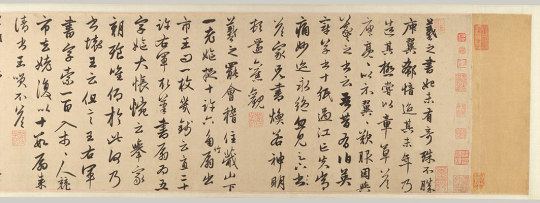
Sogdian (Cursive Script)
Derived from the Syriac script, which grew out of the Aramaic Script, the Sogdian Alphabet was developed by traders who met most of the major cultures of the Old World, and let all of those cultures affect their language and writing. Sogdian can be written write to left, like most Aramaic scripts, but also top to bottom, like the Chinese Scripts of their main trade partner. Curvy cursive lines, and characters of wildly varying length, give this script a interesting sense of flow.

Hebrew (Ktav Ashuri Script with Palestinian Vocalization)
Another offshoot of the (Imperial) Aramaic Script, the Hebrew Alphabet has a really interesting, heavy, square, solid feel. In contrast, Palestinian Voicing (an extinct form of writing vowels where all of them were above the consonants) is really light, stacked on top their vowels in little floaty towers. It's a cool combination!
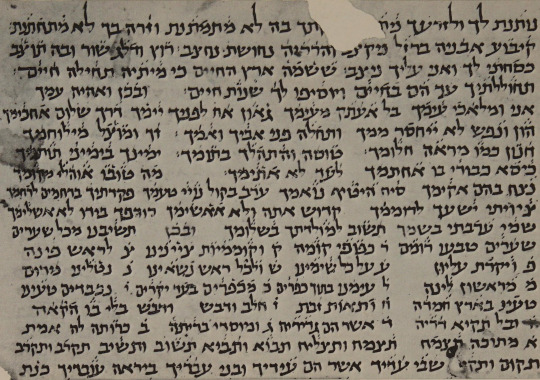
Maya (Classical Maya Script)
The most famous script of the Americas, Maya has one of the most unique reading orders of any script. Characters are written in blocks, which are then read in a zigzag (right, and then down-left) pattern. Full of heads (both animal and human), torches, seeds, and other half-identifiable shapes, Maya texts are works of art, and the more you study them, the more beautiful they become.
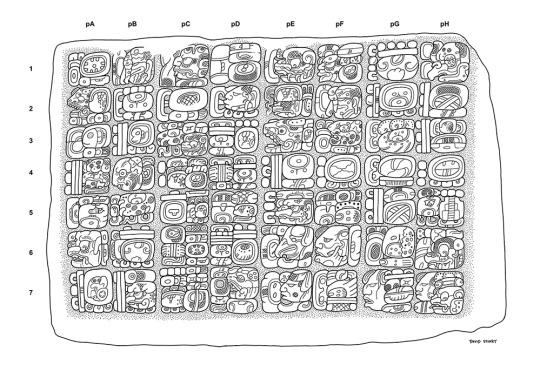
Nubian (Old Nubian Script)
Derived from Greek with additional letters from Coptic (Egyptian) and Meroitic (a previous Nubian culture). Lines above letters are used to skip parts of words deemed unnecessary. The mixture of rectangles and triangles, heavy and light line weights - it reminds me of telegrams, or early typewriter text. I love it!
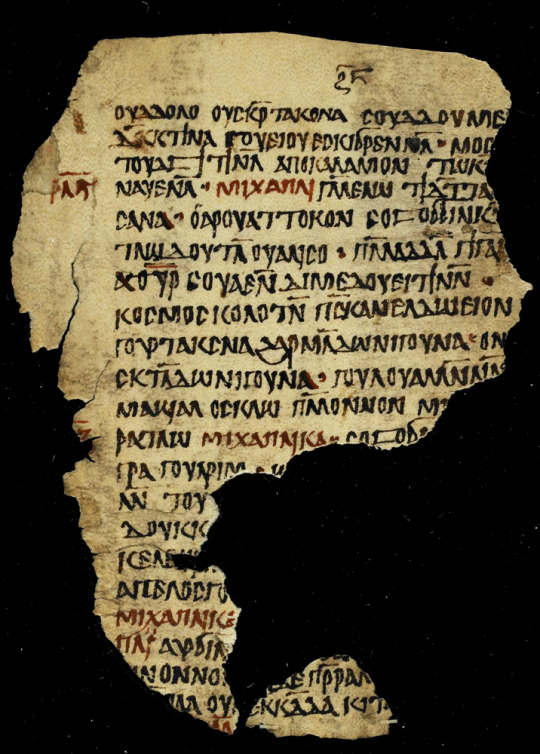
Khmer (Angkorian Khmer Script)
Derived from the Pallava Script, which derived from the Brahmi Script, Khmer is probably my favourite script to write. The curves feel so good! The spirals so pleasing! You write consonant clusters by writing little letters below the main one! A joy to create, and a joy to look at.
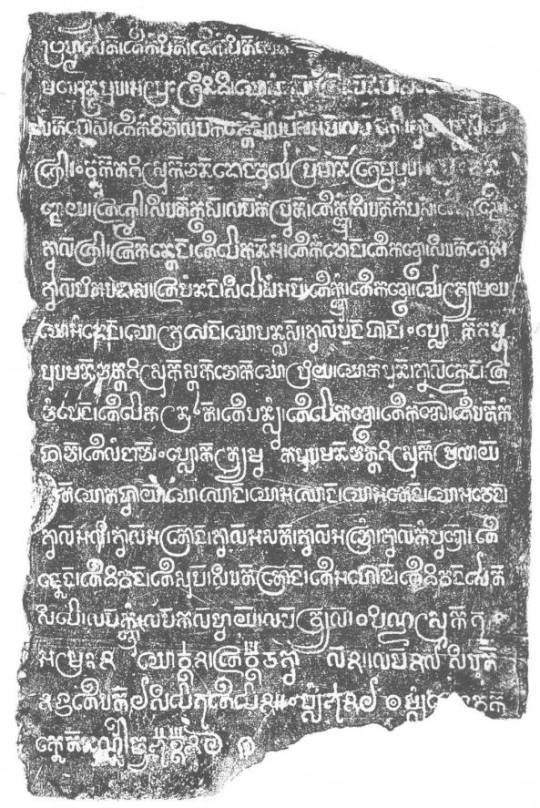
Japanese (Cursive Script)
See these wiggles? They're Chinese characters. Elegant, looking like poetry no matter what they're saying, Cursive Japanese is art. It's also ridiculous. 3 different characters, each with multiple strokes, indicated by wiggling the brush as you draw a line! Most cursive scripts are like this, but the contrast between the square solidness of Regular Script and the flow of Cursive is one of the more extreme. What a delight!
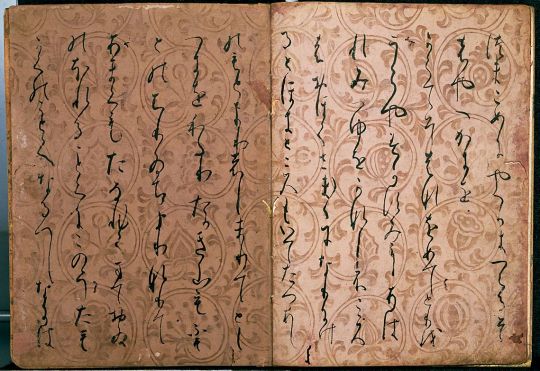
Sanskrit (Siddham Script)
I had SO MANY options for Sanskrit (Brahmi) Scripts, you guys. SO MANY! But in north-west India, during the period I study, this version of Siddham is the prettiest. Look at the curves! Those aren't just decorative, each curvy line that goes above or below the text is a vowel. Consonant clusters are shown by combining the characters together in one spot. The lines at the top haven't yet started connecting, like they do in modern Devanagari, but there's already a sense of it's existence. Such a cool script!
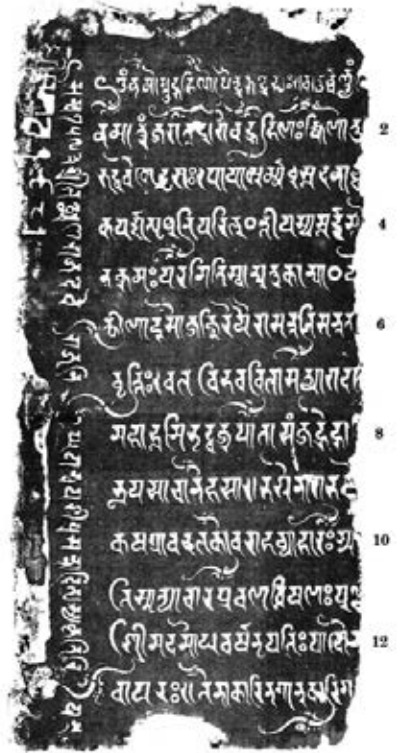
#long post#gecko's polls#calligraphy#scripts#writing systems#arabic#hebrew#khmer#maya#latin#nubian#sanskrit#sogdian#chinese#japanese
233 notes
·
View notes
Text

The Kyoto Arc Analysis Post (Part 3)
This part covers a look at the magic circles used, more manga geoguessr, and what exactly soul-Haruaki's plan was
Part 1 / Part 2 / Part 3 / Part 4
Magic Circles
A lot of magic circles came up this arc, so this is a good chance as any to look at them.
The one that shows up most frequently is this one Byakko uses.
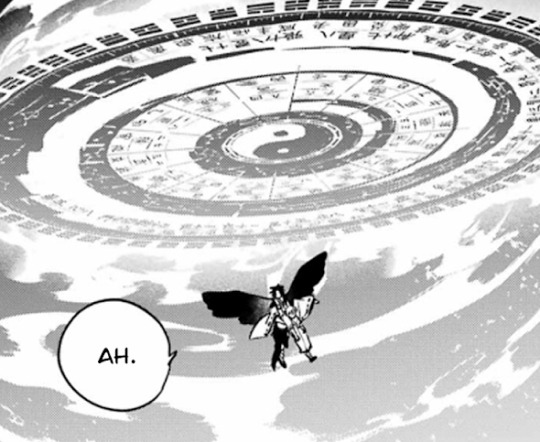

I believe this is based off a luopan, a chinese compass used in fengshui divination. The words match, as well as the compass degree markings in the outer ring.
If it’s an existing asset online, then I haven’t found it, but it’s probably a custom design.
While it doesn’t often have the yin-yang symbol in the center (that’s where the compass goes) there are some designs that do feature it in the center.
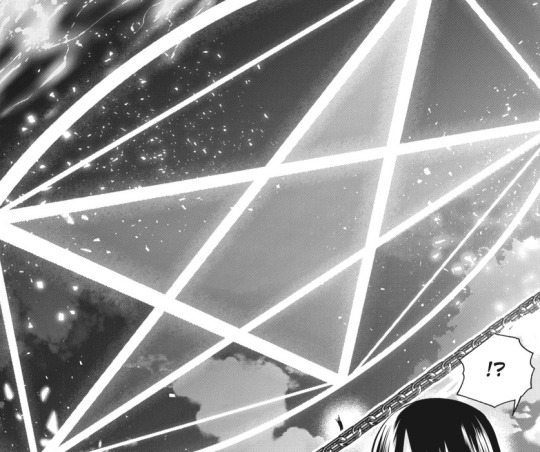
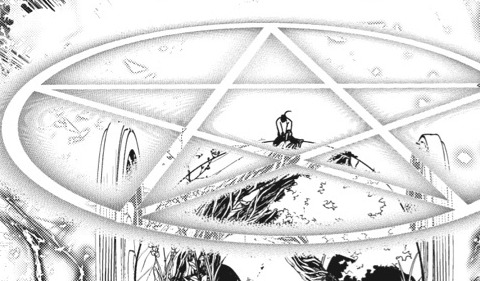
Haruaki has actually had 2 versions of his pentagram, from vol 1 to 8 there was a pentagon inside the circle, and from vol 9 onwards it’s just the star.
However, the star has gotten more detailed this arc! Specifically, you can now see where the lines cross over. (Idk how to explain this just look at it)

(When used by white haired Haruaki. You can also see the principal’s kuji-kiri in his barrier.)

Interestingly, the star doesn’t show up at all when Haruaki was summoning the four gods, instead it’s just the luopan design.
Double interestingly, Seimei has a totally different circle!
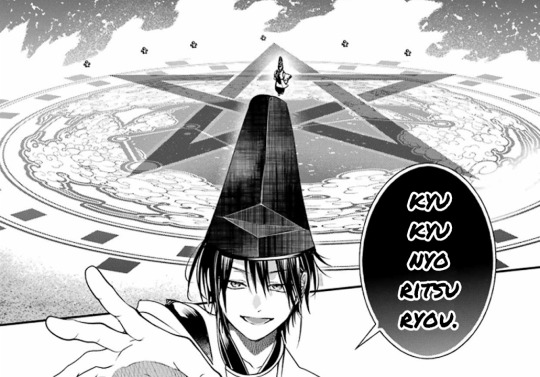
(Note the big dipper design in the middle. Or maybe little dipper? The handle is bent the wrong way again! Tanamai sensei do you know the two dippers are different….)
Also, this cloud pattern also shows up on the mark on principal's face.

But when Douman uses it, it’s the star overlaid over the luopan design?? What does this all mean?? Don’t get me started on the rest of that scene. Rest assured that comes later in this essay.
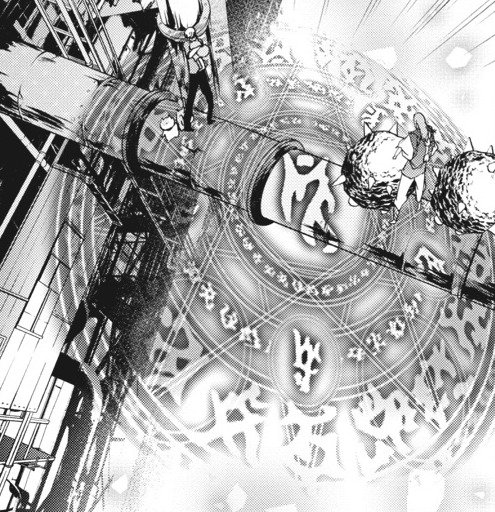
I think this panel in ch 22 is the clearest we get to see Sano’s magic circle. I think the letters are siddham script, used in buddhist scriptures, but I’m not sure what the letters are exactly. This combined with the lotus imagery on the ch 43 cover page means… idk??

There’s also this variant, which is just wacky circles I think.


And then there’s the ones from this arc. (They’re ever so slightly different, I think)
That one in ch 90 actually seems to be the same one as ch 80.5.
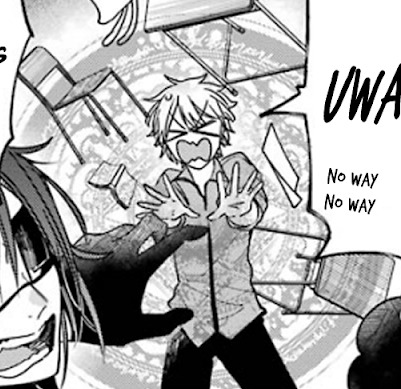
What are the words at the top of this color spread?
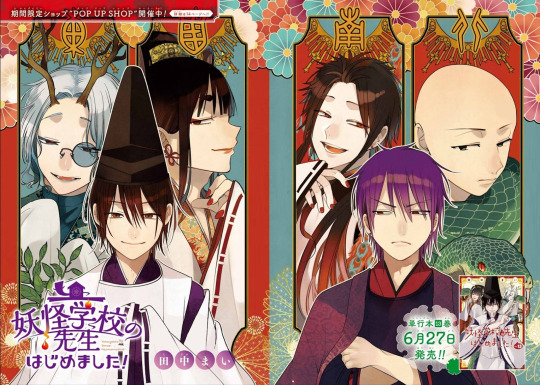
This is a good time as any to talk about this. The characters over the four gods’ are just the directions they represent, in order, east, west, south and north.
Albeit, they don’t look like typical kanji, because these are in fact the chinese pictograph versions of them, which eventually developed into the chinese characters now as well as kanji. Specifically, they’re the jiaguwen versions.
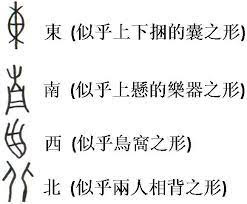
Geoguessr part 2
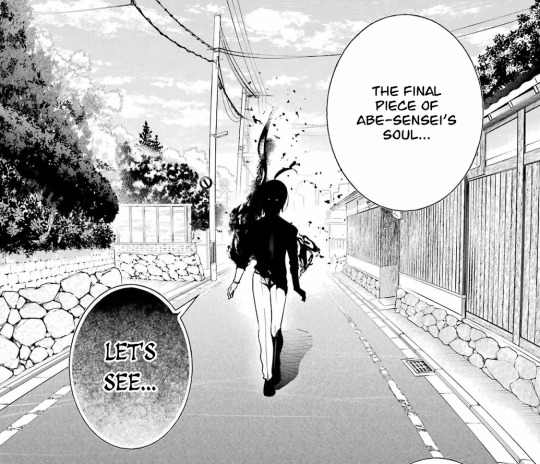
You see, there was a 3 day gap between the JP raws for ch 90 releasing and the chinese tl to come out, during which time I was bored as hell but also couldn’t do anything else because I was busy refreshing the chinese tl site every 5 seconds.
Clearly, the sane thing to do in this situation is to look at every street near Kinkaku-ji to find where this panel happens.
(Although, this is after I cleaned all the sfx from the JP chapter, but then I had to do it all over again for the CN pages anyway since it’s higher quality and I can’t just paste in the JP blurry raws)
I was originally going to also try to find the previous panel, where Rintarou and Ebisu are hiding under a fan, beside a vending machine, but I couldn’t find where that is.
Anyway, by god did I find this goddamn street.
But you see, dear reader, there’s a twist. This is not one street. This is two sides of the same estate, in other words, the left and right halves of the image are two different streets.
Here’s the link to google maps street view, if this is hard to visualize.
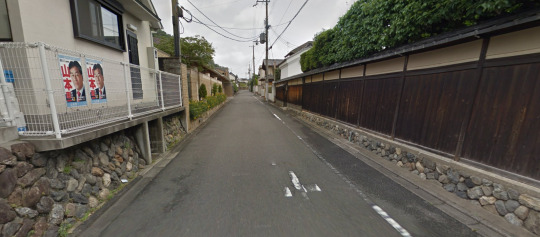

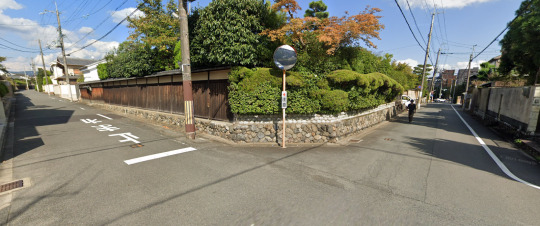
Look at this. What the hell is this. geoguessr impossible difficulty
(Thank god I don’t live in Japan I would have gone there on foot just to check every street)
What Was Soul-Haruaki’s Plan?

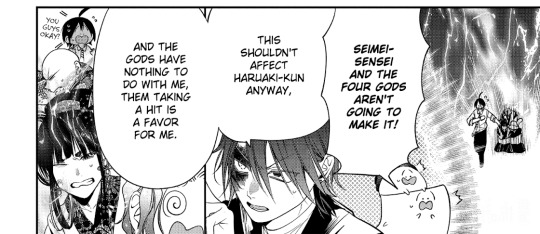
If you think about it for one second, his plan doesn’t make a whole lot of sense. Why is he using his power if it doesn’t work on his body? He’s not stupid so what is it?
But if you think about it for two seconds it actually makes sense. Without powers (and even with powers), Haruaki is Just Some Guy. If 1/5 of him starts trying to kill him, what’s he going to do? Run about it? This guy can run just as fast!
The real goal of this maneuver, besides getting Haruaki here, was also to gather the youkai who could possibly help him in one place and knock all of them out. The only reason that didn’t happen was because the principal was there, and Haruaki didn’t know about him before all this anyway.
Also, a translation note/explanation for the term “anti-youkai power”. This is just what the official translation chose to use since the start, since it worked in the moment (and most of the time really). But the japanese word doesn’t actually specifically say it’s “anti” “youkai”. The word is “退魔の力” (taima no chikara), and a more conventional translation is probably “exorcism power” which you may have noticed I use sometimes. The “力 chikara” part is without a doubt “power”, so this is about what “退魔 taima” means. If you were to take the meanings of the two kanji separately, it would be “dispel magic”. The word “魔 ma” is also often used as a prefix for magical beings, so maybe that’s where “anti-youkai” comes from. Anyway, with the “dispel magic” definition, it should be pretty clear why his power works on both youkai and gods, given they’re both magic-based.
Also, as for why this power works on the four gods both times (when Douman stole it from Seimei, and then when soul-Haruaki used it) when it’s never affected Sano very much may be because the four gods bodies are magical constructs summoned into a piece of paper, whereas Sano’s physical body is just here.
(Or maybe also because both soul-aki and Douman were gunning for the kill, and Haruaki is never gunning for the kill ever. could be multiple factors.)
Where is Mount Ooe?
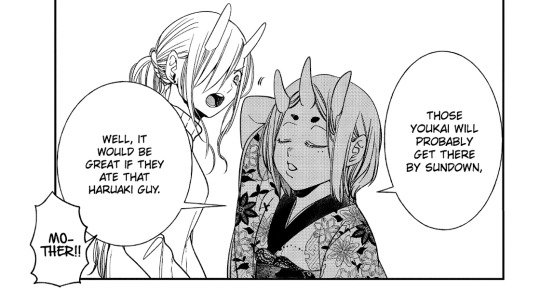
In case you forgot, Mount Ooe has the youkai town where Miki’s family lives. You’d think this is pretty close by, considering it’s repeatedly mentioned that it’s “in Kyoto”, and also Haruaki went there as a kid somehow.
The thing is, (maybe you knew this already and I’m just stupid) Kyoto PREFECTURE is fuckoff massive and Kyoto city is only a tiny tiny part of it.
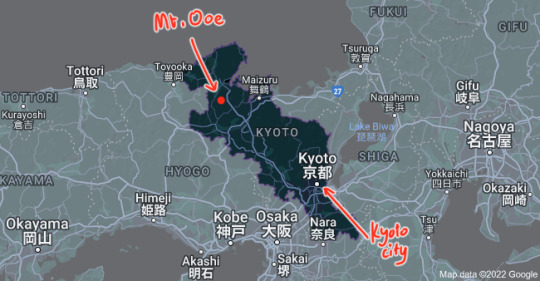
So Mount Ooe is on the other side of Kyoto from where the city is. This is in the mountains, nearly 80km from the city! My new question is what the hell was 10 year old Haruaki doing there??? How did he get there?? Who let him do this?? Mamaaki and Papaaki watch your goddamn son!! Is this what kids in Japan do?? Fuck off 80km into the mountains??
Image limit again, part 4 will be the last! (Finally!)
Part 1 / Part 2 / Part 3 / Part 4
39 notes
·
View notes
Video
instagram
This Acala Pendant and chain necklace are made of oxidized 999 silver. It depicts Acala engulfed in flames, as he stares with one eye open and one eye closed. The backside of this Acala Pendant can be engraved with the Kalachakra or the Om Mani Padme Hum mantra in the Tibetan or Siddham script. . Acala is the protector of Buddhism and destroyer of delusions and demons. He protects the the loyal practitioners of the Dharma from evil men, evil spirits, demons, and even gods. With just one look, he strikes fear into their hearts. @mantrapiece
1 note
·
View note
Text

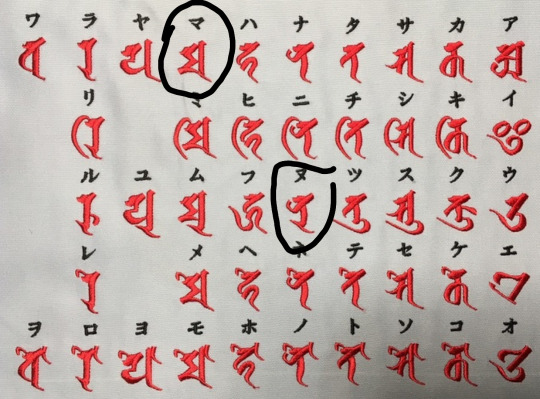


I did some quick homework on Bad Ass Temple👀 Here's roughly what I found:
Those symbols on Kuukou's jacket in his Naughty Busters days has meaning in Siddham(sanskrit) script. They form the word マ ma and ヌ nu - "Manu".
Manu means "human", but it also refers to the 14 mystical Kshatriya rulers of earth.
From there, we have Jyushi / 14th Moon (月齢14 or moon age: full moon in Japanese, which symbolizes enlightenment in Japanese Buddhism). For Heaven & Hell a.k.a. Amaguni Hitoya: What's fun is his name in Japanese also literally means Heaven & Hell (天国 tengoku 獄 goku, or prison).
Meanwhile, Harai means parajika, and here's what it means, quoted from a site (https://www.tbcm.org.my/blog/vinaya-the-four-disrobing-offences) :
The word parajika (in the ancient Indian language called Pali) is usually translated as 'making the doer defeated'. In effect it means that the offender MUST DISROBE.
They're the badass rappers of the temple, indeed.
Feel free to share if you've read any trivias on them!
151 notes
·
View notes
Text
Writing systems
Devanagari
The Devanagari script developed from eastern variants of the Gupta script called Nagari, which first emerged during the 8th century. This script was starting to resemble modern Devanagari by the 10th century, and started to replace Siddham from about 1200.
The name “Devanagari” is made up of two Sanskrit words: deva, which means “god”, “brahman” or “celestial”, and nāgarī, which means “city”. The name is variously translated as “script of the city”, “heavenly/sacred script of the city” or “[script of the] city of the gods or priests”.
Notable features
Type of writing system: abugida
Direction of writing: left to right in horizontal lines
Number of letters: 62 letters (excluding conjunct consonants)
Used to write: Bhili, Bhojpuri, Bodo, Chhattisgarhi, Dogri, Garhwali, Hindi, Kashmiri, Konkani, Kurukh, Magahi, Maithili, Marathi, Marwari, Mundari, Newari, Nepali, Pali, Rajasthani, Sanskrit, Sherpa, Sindhi, and Sunwar
Consonant letters carry an inherent vowel which can be altered or muted by means of diacritics or matra.
Vowels can be written as independent letters or by using a variety of diacritical marks which are written above, below, before or after the consonant they belong to. This feature is common to most of the alphabets of South and Southeast Asia.
When consonants occur together in clusters, special conjunct letters are used. The order of the letters is based on articulatory phonetics.
Devanagari alphabet



A selection of conjunct consonants
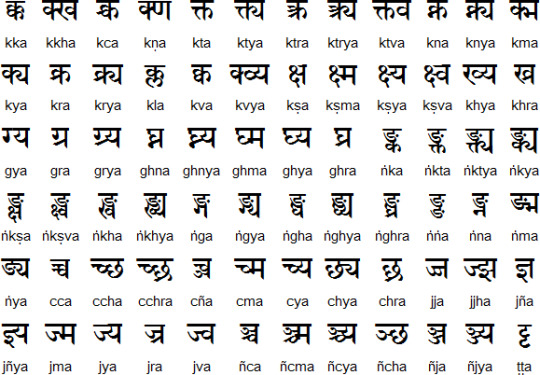
Numerals

7 notes
·
View notes
Photo
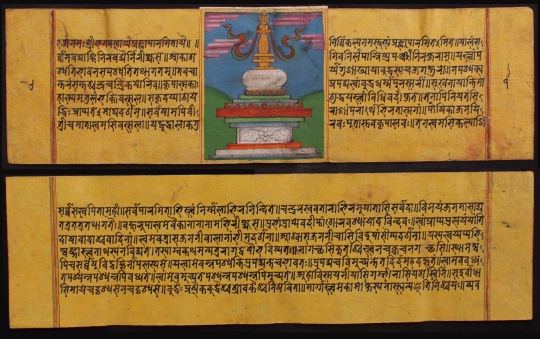
The majority of Buddhist Sanskrit texts were preserved by the Newar people of the Kathmandu valley in Nepal, and so the most common scripts in which Buddhist Sanskrit texts are written are those used by the Newars, predominantly in the Prachalit script, like this manuscript.
The rest of Buddhist Sanskrit texts were preserved in Tibet and East Asia, where they were written in the Tibetan and Siddham scripts. Ranjana and Lantsa were also used for some texts, but they’re mostly decorative. Before Prachalit other scripts were also used, like Bhujimol, but less manuscript remain in this script because it’s older and ceased to be the dominant script for writing Sanskrit sometimes in the 15-16th century when Prachalit took over.
In contrast, the majority of Hindu and Jain Sanskrit texts were preserved in scripts used in India, like Devanagari, Nandinagari, and Grantha.
#buddhist#buddhism#sanskrit#newar#newari#newa#prachalit#pracalit#nepal#nepalese#ranjana#lantsa#tibetan#siddham#manuscripts#calligraphy
17 notes
·
View notes
Photo

The syllable “SA,” in the Siddham script, used as a focus for meditation in Shingon Buddhism. https://www.instagram.com/p/CCufowfnXit/?igshid=1a9323jxh1ou5
1 note
·
View note
Text

NAME: Yu Kanda. AGE: 19 years old ( physically ). SPECIES: ( Genetically engineered artificial ) Human.
✧ * PERSONAL.
MORALITY: lawful / neutral / chaotic / good / neutral / evil / true RELIGIOUS BELIEF: Roughly agnostic theist; Raised amidst Roman Catholic practices, but does try to find a place in other practices such as Hinduism and Buddhism. SINS: greed / gluttony / sloth / lust / pride / envy / wrath VIRTUES: chastity / charity / diligence / humility / kindness / patience / justice PRIMARY GOALS IN LIFE: Come to terms with his past, find peace in general ( with himself mostly ). LANGUAGES KNOWN: Traditional Chinese; Japanese, English and ( broken ) Latin. SECRETS: Deep inside he has a heart; Would use his body as a shield against threats for pretty much any of his comrades ( mostly because he knows his body can endure damage ), would rather bleed dry than show any sign of weakness or talk about his feelings, has recurrent nightmares. SAVVIES: Mixed martial arts, emphasis on swordfight kendo, kalarippayattu, karate and wushu ( kung-fu ).
✧ * PHYSICAL.
BUILD: scrawny / bony / slender / fit / athletic / curvy / herculean / pudgy / average HEIGHT: 181 cm ( 5'11½" ). SCARS / BIRTHMARKS: No scars, has a “birthmark” with the shape of the mantra “Om” in Siddham script ( ॐ --- which refers to the “self-within”, the “soul” ). ABILITIES / POWERS: Basic hero pack: super strength, super endurance, enhanced reflexes, healing factor, flawless hydrated hair ( which remains perfect even after a battle wtf ) RESTRICTIONS: As far as it’s known... None? ( I mean, this bitch can survive a skull crush, grow an arm if dismembered... He cheated death already ).
✧ * FAVOURITES.
FOOD: Cold soba. DRINK: Cold tea. PIZZA TOPPING: Nothing in particular. COLOR: Black, blue, shades of red. MUSIC GENRE: ( Enka ) None? Gregorian chants maybe? BOOK GENRE: Any kind of informative book. MOVIE GENRE: Action, ( non-western ) Martial-art movies. SEASON: Monsoon.
✧ * FUN STUFF.
SINGS IN THE SHOWER: Nope. LIKES BAD PUNS: Absolutely not, make one near him at your own risk. CURSE WORDS: Each and every one of them, but only if necessary for emphasis.
tagged by: @catfought ( aaaaaaa THANK YOU DANTE ♡ ) tagging: @starxwalker ( Bonnie? ) . @kagxra ( Chyio? ) . @inkxpapers . @lotuskept . @braineatnr . @atletilia . @fallenxkey . @crowleiii and anyone who feels like doing it ( and tag me so I can see it ! ♡ )
#❖┋O5𝖙𝖍 • ⌜ハート⌟ ——— ( headcanons ) .#❖┋( dash games ) .#( You can argue Kanda is considered ''too dumb'' to know all these things. )#( but think about it; Kanda was MADE FOR WAR he needs to be prepared to just about anything that revolves around it. )#( and as some of you may know at this rate; I do play Kanda as a warrior bit more serious; calmer when necessary. )#( long post. )
3 notes
·
View notes
Photo

A chart comparing Japanese script (Siddham), Sharada script of Kashmir and Devanagari. The similarities between Siddham and Sharada corroborate the legend that Siddham/Bonji script was brought to Japan by the disciple of a Kashmiri Sanskrit teacher named Prajna in the 9th century.
3 notes
·
View notes
Text
Titan Nebula Watches: The Perfect Gift for Diwali
This Nakashi nebula watch collection is for those who love both temple architecture and fine craftsmanship. The collection uses traditional gold floral stamping techniques, as well as Nakashi, filigree, and Rawa gold workmanship to create patterns that blend an old-world charm with sophisticated design. The result is a stunning antique finish watch. The exquisite 18K gold bracelets, inspired by architectural elements in temples, feature domes, pillars, and floral and chakra patterns. These patterns are complemented by gold craftsmanship Diwali is just around the corner and if you are still looking for the perfect gift for your loved ones, look no further than the Titan Nebula Watches. These beautiful watches are not only a great gift for Diwali, but they are also a great way to show your loved ones how much you care about also to show how much you appreciate their time. These Nebula Watches are also the perfect gift for those who are looking for something unique and special.
Due to their stunning designs and impeccable craftsmanship, these watches are sure to make a lasting impression. But that's not all. The Titan Nebula Watches also come with 18-karat luxurious gold and a host of features that make them the perfect gift for any occasion. For instance, their unique design ensures that they are always in style. And their Swiss-made movement ensures that they keep accurate time.
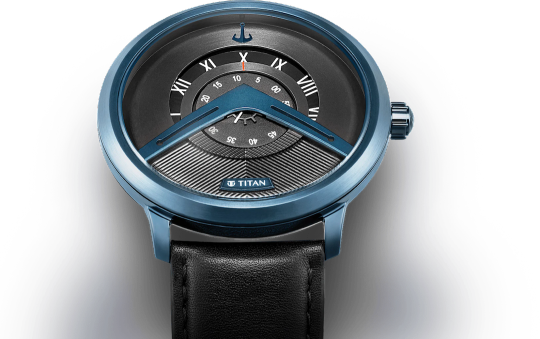
On such an auspicious and happy event, Titan Nebula brings to you a list of the most gorgeous and adorable nebula watches that will brighten up the lives of your loved ones’!
Nazakat - Nebula watches.
Nebula the Nazakat collection is an excellent gift for Diwali to gift to your loved ones. This watch is perfect for those who like pure gold - This watch line of handcrafted timepieces is designed exclusively for women. Timepieces in this limited edition collection incorporate traditional Partaaz and Chattai work in 22-carat gold. Meticulously handcrafted watches in Kundan Polki and Meenakari designs, the stunning Nazakat watches are available in 12 exquisite designs. This collection is designed for those who appreciate fine jewellery and watches. It is handcrafted by artisans in Jaipur and takes its inspiration from the age-old tradition of handcrafted gemstone jewellery.
Titan Calligraphy by Nebula.
The NEBULA Calligraphy collection pays tribute to three beautiful scripts that have played a significant role in Indian history – Modi, Siddham, and Kufic. The Modi script was used by the great Maratha kings, the Siddham script was used by the mighty Mauryan kings, and the poetic Kufic script revealed the softer side of the great Mughal conquerors.
These 18K solid gold timepieces are a luxurious interpretation of art that is Calligraphy, taking inspiration from the grandeur of these scriptures and the flow and flourishes of a brush-stroke.

Nakashi - Nebula’s women’s watches.
techniques, filigree and raw detailing. This watch's bracelet links are linked by exquisite gold hinges, which lend it a timeless, heritage look.
Conclusion…
Coming end of the road, the Titan Nebula Watches are the perfect gift for your loved ones this Diwali. Their exquisite design and amazing features make them a must-have for anyone who loves to keep track of time in style. Whether you are looking for a gift for your husband, wife, brother, sister, or friend, these watches are sure to impress. Not only is it a beautiful piece of jewellery, but it also has a special meaning. The Titan Nebula is known as the "Eye of Shiva" and is said to represent the universe. It is also a symbol of protection and is believed to ward off evil spirits.

With their beauty, durability, and features, they are sure to make any occasion special. That not all Nebula products come with a lifetime warranty from Titan. For more information related to Titan nebula watches or their newly released collection. You can visit The Hour Markers, a leading media house of wristwatches all across the globe!
0 notes
Text


█ BASIC INFO :
Nᴀᴍᴇ: Kanda Yu ( 宽大玉 / 神田ユウ )
Wᴇᴀᴩᴏɴ: Mugen ( 無限 )
Aɢᴇ: 19 ( physically ) / 9 ( chronologically )
Bɪʀᴛʜ ᴅᴀᴛᴇ: June 6 ( Gemini )
Bɪʀᴛʜᴩʟᴀᴄᴇ: Unknown ( secret headquarters ), China
Sᴩᴇᴄɪᴇꜱ: Genetically engineered organism / Human / Magic user
Gᴇɴᴅᴇʀ: Cisgender Male
Oʀɪᴇɴᴛᴀᴛɪᴏɴ: Demisexual / Demiromantic
Oᴄᴄᴜᴩᴀᴛɪᴏɴ: Exorcist / Soldier
Aʟʟᴇɢɪᴀɴᴄᴇ: Black Order
Aʟɪɢɴᴍᴇɴᴛ: Chaotic Good
MBTI ᴛyᴩᴇ: INTJ ( Architect ) ⠀ ⠀
█ PHYSICAL TRAITS :
Eyᴇ ᴄᴏʟᴏᴜʀ: Saphir blue
Hᴀɪʀ ᴄᴏʟᴏᴜʀ: Bluish black
Hᴇɪɢʜᴛ: 181 cm (5'11½").
Bᴏᴅy ʙᴜɪʟᴅ: Athletic and leanly muscular
Nᴏᴛᴀʙʟᴇ ᴩʜyꜱɪᴄᴀʟ ᴛʀᴀɪᴛꜱ: Refined and sharp features, almost bordering on androgyny, but still very masculine. The kind that catches the eye even of those who are not interested in men. Has a “birthmark” with the shape of the mantra “Om” in Siddham script ( ॐ - which refers to the “self-within”, the “soul” ). ⠀
█ ABILITIES :
Eɴʜᴀɴᴄᴇᴅ ᴀʀᴛɪꜰɪᴄɪᴀʟ ʀᴇɢᴇɴᴇʀᴀᴛɪᴏɴ: Kanda can recover much faster than ordinary humans and is able to withstand the blood of Akuma due to a secret skill created by the Chan family. He is seen being able to rebirth after death ("approximately during 580 seconds"), regenerate lost limbs, and even survive a crushed skull. His blood is also enriched with healing power, even allowing him to accidentally save fellow Exorcist Noise Marie from a wound that had been deemed fatal and later Johnny from Nea's attack. He can also filter alcohol so that only very strong alcohol can have an impact on him.
Pʜyꜱɪᴄᴀʟ ᴩʀᴏᴡᴇꜱꜱ: Kanda is noticeably much stronger than the average human; while his Anti-Akuma weapon does enhance his power, when none of its abilities are activate he is able to cleave Akuma in half using the blade alone.
Sᴩᴇᴇᴅ: Kanda is faster than most other characters in the series and can leap beyond average distances, though this may be attributed to his regenerative abilities, where such jumps on normal humans would result in damaged ligaments in the feet. .
Exᴩᴇʀᴛ ꜱᴡᴏʀᴅꜱᴍᴀɴ: Though his Innocence makes him already inclined to swordsmanship, Kanda is shown to be powerful with a blade in his own right. He has been seen using regular swords to hold off Akuma as evolved as Level Four, and can use various forms of Japanese swords without changing his fighting style.
Dᴏᴜʙʟᴇ ᴡᴇᴀᴩᴏɴ & ᴅᴜᴀʟ ᴡɪᴇʟᴅɪɴɢ: his sword, Mugen, still takes the form of a standard Japanese Katana sword, but it can also transform into a double-bladed sword.
Mᴀʀᴛɪᴀʟ ꜱᴋɪʟʟꜱ: Coupled with his natural enhanced strength and speed due to him being a second exorcist, he was seen during training to easily defeat dozens of finders in martial fights. ⠀
█ BRIEF BIO :
Pᴇʀꜱᴏɴᴀʟɪᴛy
Kanda is a cold, stoic, and arrogant person who shows little regard to the lives of those around him, even his fellow Exorcists. He is, more often than not, willing to leave those who slow him down behind, even if it means their death and especially if they are not Exorcists, viewing any field officers (especially Finders) who are not Exorcists expendable pawns who should not be expected to be saved. He is even often seen turning his blade on his own comrades over small things, such as Lavi calling him by his given name, Yu, or Allen simply trying to talk to him. Despite his words, Kanda is frequently seen saving those around him, and even putting his own life at risk (like he does with Gozu), though he does it grudgingly and openly complains. Kanda's personality does not seem to have changed since he was young. Because of their conflicting views about the worth of the lives of others, Kanda and Allen are almost constantly at one another's throats, Kanda ready to blame Allen for anything that goes wrong and Allen often breaking his polite exterior to let his "dark side" out as he incites an argument with Kanda, which frequently leads to physical confrontation. Kanda has openly told Allen he hates people "like him"; people who make promises they can't keep and seem to fight without purpose.
Wᴇᴀᴩᴏɴ: Iɴɴᴏᴄᴇɴᴄᴇ
. Kanda has a sword with supernatural powers. He runs his index and middle finger along the back of the blade to activate it, whilst saying Mugen Unsheathe, Innocence Activate, which turns the blade silver. The shape of the sword has changed throughout Kanda's Timeline, during his childhood, it takes the form of a small butcher blade with multiple small wings on the hilt, upon Kanda's introduction in the beginning of the series, it took the form of a chokuto (a straight Japanese sword without a tsuba) with a black cross-emblazoned hilt and sheath, but after his battle with Skinn Bolic, it was reforged into a traditional Katana.
Cᴀɴᴏɴ ᴅɪᴠᴇʀɢᴇɴᴄy
Just a small thing about my portrayal that can be considered canon divergence: I tend to write him a bit more docile and quiet than expected: Even though Kanda makes no secret and is very vocal about his disregard towards people, pretty much ~ 90/95% of what he feels remains concealed; mostly because he literally has no emotional intelligence to put it into words, which mostly leads to misunderstandings he can't care less about clarifying. Another worth mentioning thing is that (my) Kanda just can't shout or raise the hand to a woman for no reason, unless required or when someone's life is at a stake (i.e. training or when fighting against an enemy). I like to believe that Kanda wouldn't find it to be honorable neither fitting for any respectful man.
#﹙⠀❖⠀⋮⠀ꜱᴜʙᴊᴇᴄᴛ:YU⠀»⠀ᴅᴇᴠᴇʟᴏᴩᴍᴇɴᴛ:BIO ! ﹚#﹙⠀ long post ! ﹚#﹙⠀☣⠀⋮⠀ʙʟᴏɢʜᴀᴢᴀʀᴅ ᴡᴀʀɴɪɴɢ:NEW MUSE ! ﹚#( he's initially available @lotusdelusion but I'm super lazy to keep up with all the interactions memes and whatnot. )#( I won't move him permanently but I'll keep him as a ''request only'' muse for now? )#( ALSO I might be changing the head pic becoz this one was the best I had IUDHAIUHD )#( I also intend to clean up my muse list. so I could add Tomio/ka who is voiced by the same actor IUHDUIAHDI )
1 note
·
View note
Photo

This Shurangama Sutra Medallion was handcrafted from pure 999 silver by a very skilled silversmith and devoted practitioner of Buddhism. It is engraved with the entire Shurangama Sutra in the Siddham script. From $180. @mantrapiece
1 note
·
View note
